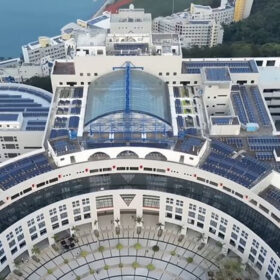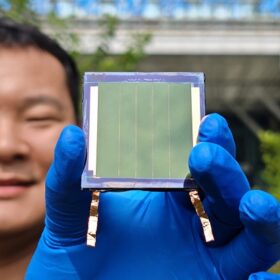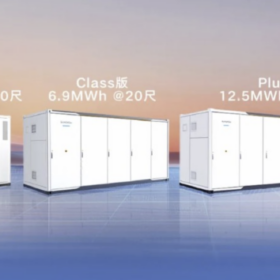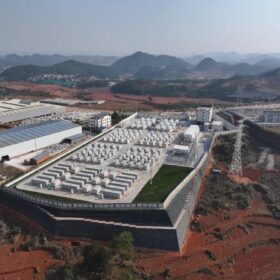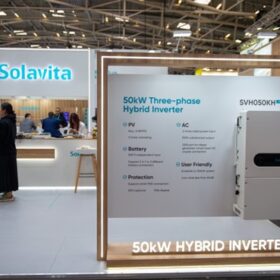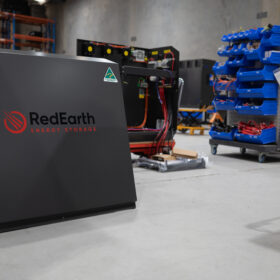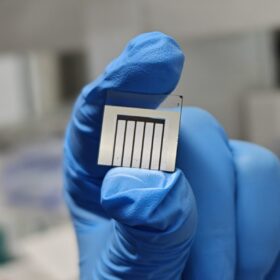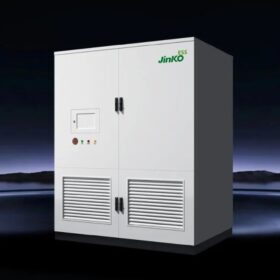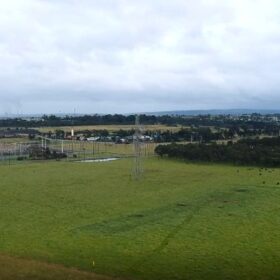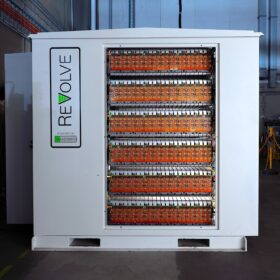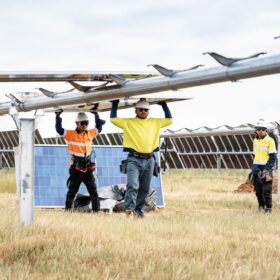Trina Solar reveals 841 W perovskite-silicon tandem PV module prototype
China’s Trina Solar has unveiled a perovskite‑silicon tandem solar module prototype delivering 841 W and 27.1% efficiency, based on 210 mm tandem cells.
Longi unveils 700 W back-contact PV panel with world record silicon solar cell
Chinese solar manufacturer Longi has unveiled a new PV module with 25.9% efficiency, produced using both low- and high-temperature passivation techniques.
Rooftop PV may ‘unintentionally’ exacerbate urban heat
New research from Hong Kong confirms that rooftop PV systems could raise daytime temperatures in urban environments. The scientists explained that although their findings highlight important urban resilience considerations, they should not detract from the broader benefits of PV systems for energy sustainability and carbon reduction.
Scientists build 29.5%-efficiency all-perovskite tandem solar cells
An international team of researchers used a novel interfacial treatment to improve the performance of perovskite solar cells across a range of narrow and wide bandgap single junction, tandem, and mini-module samples. An all-perovskite tandem solar cell demonstrated its use with a certified efficiency of 29.5%.
Sungrow unveils PowerTitan 3.0 battery with 684 Ah cell
Sungrow has launched the PowerTitan 3.0 battery energy storage system, built around a 684 Ah cell and a fully liquid-cooled silicon carbide power conversion system.
China launches world’s first grid-forming sodium-ion battery storage plant
The Baochi Energy Storage Station in Yunnan integrates lithium and sodium-ion technologies at scale, a global first, aiming to stabilise renewable energy and cut costs as China accelerates its energy transition.
Solavita launches 30-50 kW hybrid inverter series
Chinese inverter maker Solavita says its new hybrid inverter series offers high PV oversizing, multi-port battery integration, and grid-smart controls to meet growing demand for scalable solar-plus-storage in commercial and industrial, and large residential markets.
RedEarth teams with global partners to build microgrid-in-a-box system
Queensland battery solutions provider RedEarth Energy Storage has announced an international partnership that will see it jointly develop a ‘world first’ integrated hardware and energy management system that combines solar, storage, and bidirectional electric vehicle charging capabilities in a single unit.
Perovksite-TOPCon tandem solar cell based on self-assembled monolayer achieves 31.1% efficiency
Researchers in China have fabricated a perovskite-TOPCon solar cell with a top perovskite device utilising a self-assembled monolayer aimed to improved cell stability. The tandem cell achieved a high fill factor and a certified efficiency of 30.9%.
Jinko unveils 520 kWh C&I battery storage system
Jinko ESS has launched a new modular 520 kWh battery energy storage system for commercial and industrial users. The product will be available for global shipment in Q3 2025.

